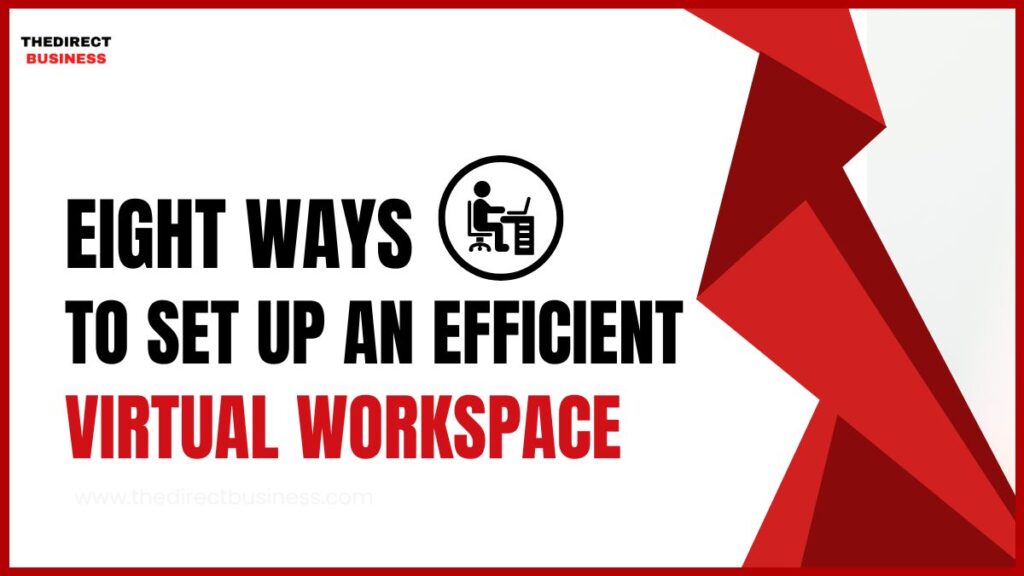
Introduction:
As remote work becomes increasingly common, an efficient virtual workspace is essential for maximizing productivity and fostering collaboration. Whether you’re a freelancer, remote employee, or part of a virtual team, optimizing your digital environment can greatly enhance your workflow and overall work experience.
This article will explore eight effective strategies to establish an efficient virtual workspace that promotes productivity, seamless communication, and effective collaboration. Additionally, we will highlight the importance of using tools to create visually engaging online meeting posters and invitations.
1. Designate a dedicated workspace:
Having a designated workspace is crucial for creating boundaries and maintaining focus. Choose a quiet area in your home to set up your workstation. Ideally, it should be free from distractions and provide you with the necessary privacy to concentrate on your tasks.
2. Invest in reliable hardware and software:
Invest in reliable hardware and software to ensure a smooth virtual work experience. Ensure you have a stable internet connection, a well-functioning computer or laptop, and the necessary software tools. Keep your hardware and software regularly updated to benefit from the latest features and security patches.
3. Utilize cloud storage and file-sharing solutions:
Collaboration and file sharing are essential in a virtual workspace. Take advantage of cloud storage solutions such as Google Drive, Dropbox, or Microsoft OneDrive to store and share files with your team members securely. These platforms offer real-time syncing and version control, enabling seamless collaboration on shared documents.
4. Embrace project management and task-tracking tools:
Effectively managing projects and tracking tasks is crucial for staying organized and meeting deadlines. Utilize project management tools to create and assign tasks, set deadlines, and track progress. These tools provide visibility into project timelines and facilitate smooth collaboration within virtual teams.
5. Foster seamless communication:
Clear and efficient communication is vital in a virtual workspace. Utilize communication tools to facilitate real-time messaging, video conferencing, and screen sharing. Establish communication protocols, such as designated channels for different topics, to ensure efficient information flow within your team.
6. Establish regular check-ins and virtual meetings:
Regular check-ins and virtual meetings are essential for fostering team cohesion and collaboration. Schedule recurring team meetings to discuss project updates, address challenges, and brainstorm ideas.
Use online meeting posters and invitations created with PosterMyWall to engage your team visually and set the tone for productive and engaging virtual meetings.
7. Optimize virtual meeting etiquette:
Virtual meetings require specific etiquette to ensure a productive and professional atmosphere. Encourage attendees to mute themselves when not speaking, use video when appropriate, and utilize features like screen sharing and virtual whiteboards to enhance collaboration. Set clear agendas and distribute meeting minutes afterward to keep everyone aligned and informed.
8. Prioritize work-life balance:
Maintaining a healthy work-life balance is crucial when working in a virtual environment. Establish boundaries between your work and personal life by setting specific work hours, taking regular breaks, and creating a dedicated workspace separate from your living area. This balance is essential for your overall well-being and long-term productivity.
9. Practice effective time management:
Managing your time effectively is crucial when working in a virtual environment. Set clear goals and prioritize your tasks based on their importance and deadlines.
Utilize time management techniques such as the Pomodoro Technique or time blocking to enhance focus and productivity. Such tools can help track and analyze your time usage, allowing you to identify areas for improvement and optimize your workflow.
10. Create a virtual watercooler space:
In a traditional office setting, informal conversations and interactions at the water cooler foster community and camaraderie among colleagues. Creating a similar environment for socializing and building relationships is important in a virtual workspace.
Establish a dedicated chat channel or virtual room where team members can chat casually, share personal updates, or discuss non-work-related topics. It helps foster a sense of belonging and encourages team bonding, even remotely.
Conclusion:
Creating an efficient virtual workspace is key to maximizing productivity, promoting collaboration, and maintaining a healthy work-life balance. You can optimize your virtual work environment by implementing the strategies outlined in this article, such as designating a dedicated workspace, utilizing cloud storage and project management tools, and fostering seamless communication.
Additionally, visually engaging online meeting posters and invitations created with tools like PosterMyWall can enhance the impact and engagement of your virtual meetings. Embrace these strategies, adapt them to your needs, and watch as your virtual workspace becomes a hub of efficiency and success.